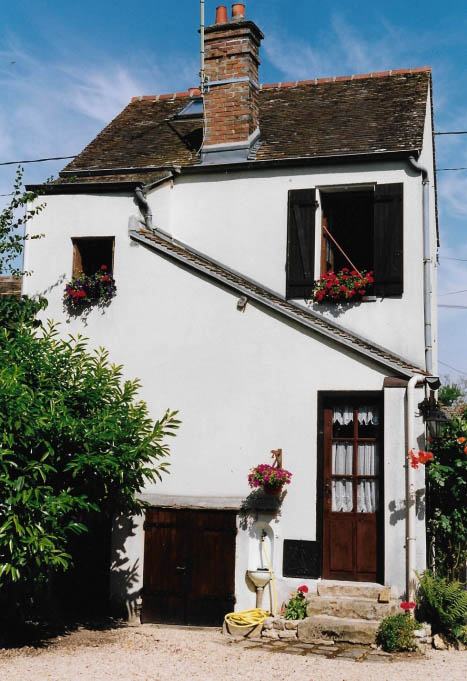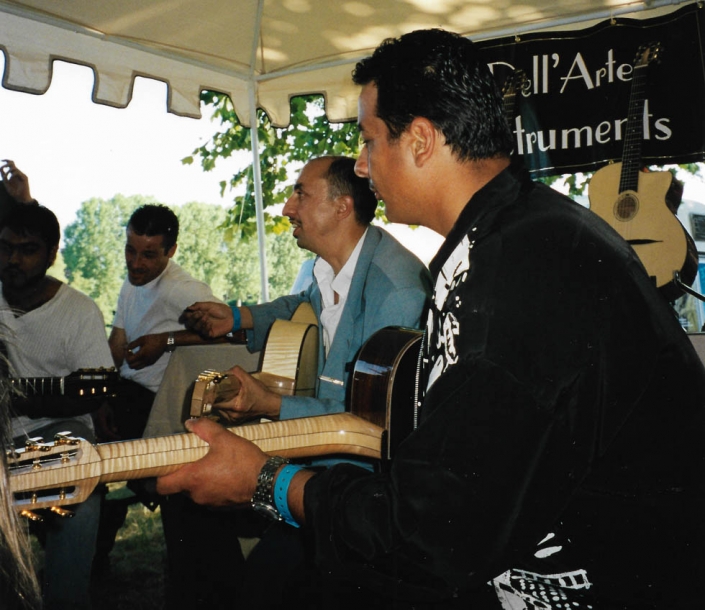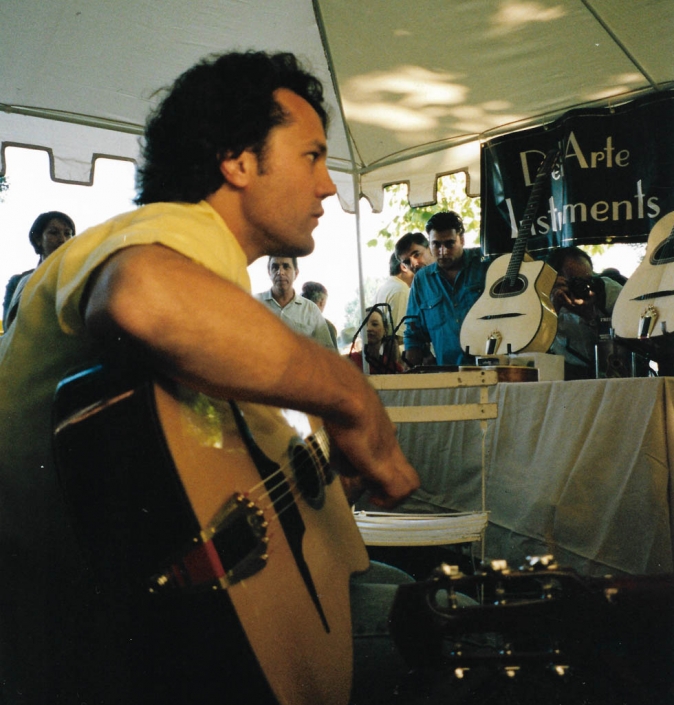Paying Homage To The Master of Manouche
YOU know when you’ve been Djangoed.
It only takes a few moments and you slide into a state of mesmerized bliss and go about for days on end with a silly smile on your face.
It must be something like smoking weed.
When those infectious rhythms get into your head, you’re Djangoed alright.
The drowsy hamlet of Samois, on the edge of the Fontainebleau Forest, lies all but dormant for most of the year, nestling by elegant weeping willow trees which drape themselves along the banks of the River Seine.
Then, each June the adoring hordes descend for an extraordinary musical extravaganza and depart again a smiling mass having had their annual fix of swing jazz – Romany gypsy style.
For three days I joined the crowd to gorge myself on a musical feast you won’t find anywhere else.
A visit to Samois, you see, is more like a pilgrimage for fans of the greatest name of the genre – the master of them all – Django Reinhardt.
The maestro died in 1953 and is buried in the cemetery here. His followers pay homage, arriving in droves like hungry locusts to the idyllic spot for the concerts and jam sessions.
Makeshift bridges are constructed to span a narrow stretch of the river by its western embankment to the Ile de Berceau – a long, narrow island – where a big open-air stage is erected in the midst of a tented village.
It is a unique gathering for the weekend which attracts top class musicians from around the world. All are well-established recording artistes, including acts from Canada, Poland, Italy, France, Germany and Belgium.
Mostly, though, aficionados of the distinctive Romany-rooted guitar style they call Manouche come to hear the young pretenders and their modern-day heroes do battle with each other, all intent on keeping the Django-esque wizzardry alive.
I visited the graveside to pay respects to the man who had given me so much enjoyment since I first discovered his incredible skills while listening to albums of the legendary Le Quintette de Hot Club de France he formed in the 1930s with Stéphane Grappelli.
Plectrums
Guitarists from around the world who still idolise him, touchingly leave their plectrums around the base of the grey granite plinth.
His musical legacy lives on thanks to dedicated fans of his style, many of whom play every bit as well as he ever did. There is one important difference, though. Django injured his chord hand so severely in a fire which ripped through his gypsy caravan as a 12-year-old that he lost the use of all but two fingers.
How he ever managed to continue to play, never mind master the instrument with such dexterity, bamboozles any semblance of rational thinking.
It is an emotionally-charged get-together, therefore, and the Sunday Mass to commemorate his influence and musical contribution in the village church is a standing-room-only celebration.
Back at the concert site, it’s great fun just sitting back to watch the action unfold. Every now and then, you pop over to the catering park where cooks serve up brown paper parcels of roast potatoes, chicken casserole or paella from huge cauldrons which simmer all day long. Great slabs of pork are roasted too over charcoal alongside garlic sausage.
One afternoon, a man arrived and unpacked the contents of his rucksack on to a table.
As soon as the early Django Reinhardt vinyl and ancient 78rpm discs were spread out, in a frantic grabbing frenzy, they were all gone.
Occasionally the godfathers of Manouche, better-known names, such as Raphaël Faÿs or brothers Romane and Stochelo Rosenberg, who are modern-day giants, get a hero’s welcome whenever they stroll in amid much nudging and sleeve-tugging.
The well-established names are happy to mingle with the crowd, soaking up the adoration and strutting their stuff in 18-carat style. From time to time, they stop to admire the instruments which famous makers such as Dell Arte and Lebreton have put on show in their tents – then treat onlookers to dazzling impromptu show-off performances.
At the other end of the spectrum, the drama surrounding the young bucks would provide great material for a film script.
These olive-complexioned adversaries cruise the sideshow tents like sharks weighing up the competition. They disappear then return, guitar in hand, all set for the musical duel.
Hustlers
They are like pool room hustlers. When one sits down, it’s normally directly opposite the musician he has already sussed out and chooses to impress.
The sessions are delivered at blistering pace, some of the get-this riffs performed by hands which are unbelievably attached to bodies only nine or ten years old.
On the sidelines, ecstatic punters who cannot believe they are so lucky, push forward eagerly to immerse themselves and wallow. If you look up, that’s when you see the sea of smiling faces.
The I-can-play-better-than-you challenges last well into the night around log fires in campsites spread along the river’s edge as musical gauntlets are thrown down left, right and centre.
At the end of the night, you find yourself driving deliberately slowly along the avenue known as the “road of guitars”, windows down to catch the fading notes as tunes float out on the breeze, still tugging at the coat tails.
I never saw a single mobile phone in use throughout the entire weekend.
In jazzland, they’re all too chilled out for that. Besides, it would be very un-hip if one went off in the midst of such exalted company. The river would surely beckon after a few well-aimed boots had connected with the offending backside.
At the close of proceedings, someone said he wished he could bottle up the vibe and take it home to let some out a little at a time whenever he required a pick-me-up.
In reality, there’s no need. The feel-good factor doesn’t go away.
Like I said, when you’ve been Djangoed, you just can’t stop smiling.
* Check out the www.festivaldjangoreinhardt.com website for details on next year’s dates and camping opportunities. The comfortable La Fallonniere gite (sleeping two) including breakfast, at nearby Bois le Rois, was only a five-minute drive from the hub of things. There are many more to choose from online. River houseboats are also available at Fontainebleau, 5km from Samois.
Getting There: Hire a car on arrival at the airport for the two-and-a-half hour drive from Paris to Samois, or take the coach service into the city centre and train from Gare de Lyon to Avon/Fontainebleau to link up with the mini bus shuttle to and from the festival site.







